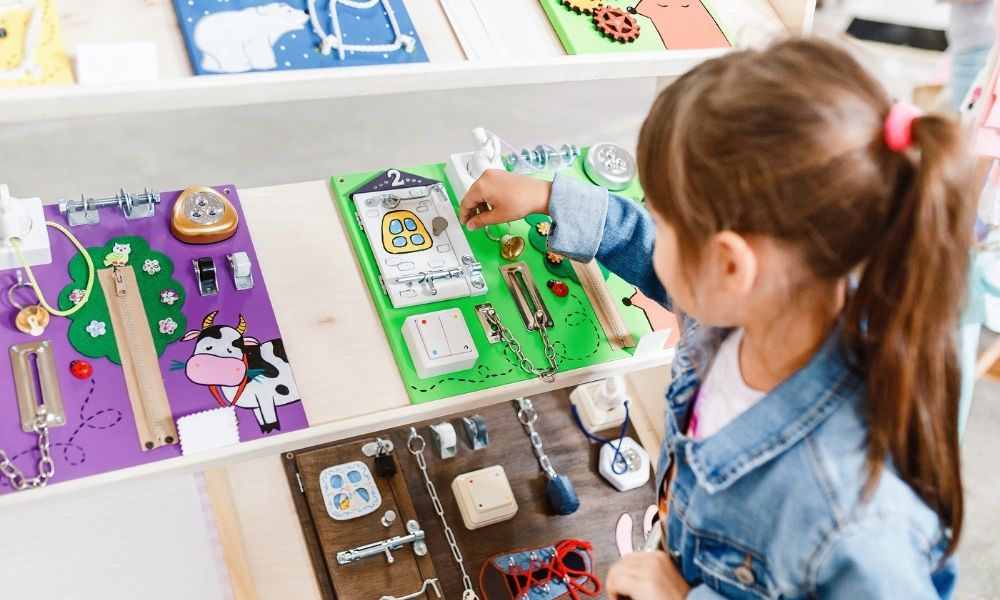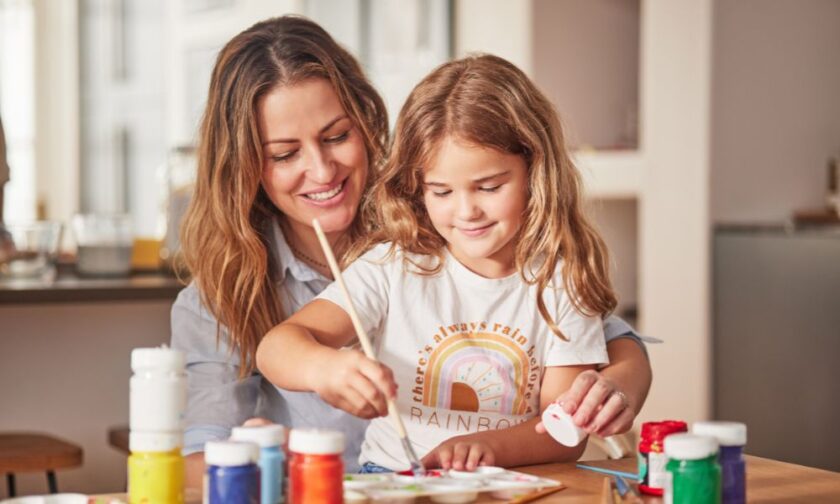When you have kids with special needs, you never feel like you’re doing enough to help them learn or adapt to their surroundings. Every child is so different, but you’ll go broke pretty quickly if you want to invest in every sensory toy on the market. However, there is a great alternative solution—interactive kids’ toys you can make at home. Depending on their ages, you can include your kids in the process by turning them into craft projects. Let these ideas inspire you, as you might come up with something even better for your child.
Sensory Board
The best thing about a sensory board is that it’s never finished. You can add or subtract features according to your child’s development and interests; the possibilities are limitless. All you need to start is a basic wooden board that you can find at a hardware or home improvement store. If you’re handy, you can probably make a professional-looking interactive board, but anything that you can attach safely will work: cable clips, self-drilling screws, Velcro, staple-gun, hot glue, and so on. Just keep an eye on the elements and make sure they’re secure. A few ideas for interactive objects include:
- Chains in plastic and lighter metal
- Chain lock
- Slide lock
- Push light
- Mirror
- Carpet scraps
- Carabiner
- Doorstop
- Plastic buckle
- Doorbell
- Light switch
- Travel lock
- Silky rope with clothespins
- Binder rings
- Crescent lock
- Furry cloth
- Belt buckle
- Shoelaces
- Yarn scraps
- Crank handle
- Pulley
- Doorknobs
Ribbon Box
Many parents have noticed that their babies don’t just take to the blankets—they become obsessed with the tags on them. Companies have capitalized on this with all-tag toys for kids to play with, but your leftover craft supplies are probably even more eclectic with their different textures. There are all sorts of crafts you can do with your kids with leftover ribbon scraps, or you can even try using markers on wider white ribbons for a new coloring experience. A ribbon box can also act as a blank slate where your kids can improvise with what they respond to. You’ll need the following items:
- Recycled cardboard box
- Ribbons in shorter lengths
- Craft knife
Make slits in the box and pass different kinds of ribbon through it, knotting them on each side. You can use all kinds of ribbon—burlap, grosgrain, satin, sheer—and have fun decorating or wrapping the box for maximum visual engagement. Pop some noisemakers inside the box like jingle bells if you’re sure it won’t grate on your nerves.
Flubber
Even older kids get a kick out of this substance, also known as oobleck. It’s a non-Newtonian fluid that flows when it’s under low stress, but when you close your first around it, it behaves like a solid. All you need is:
- ½ cup hot water
- ¾ cup cold water
- 1 teaspoon borax
- 1 cup Elmer’s glue
- Food coloring
Mix the glue, cold water, and food coloring in one bowl. In another bowl, mix the hot water and borax until the borax completely dissolves. Slowly add the glue mixture to the borax mixture and mix well. Pour off the excess water.
Sometimes the main challenge with interactive kids’ toys you can make at home is eventually separating your kids from them. If you’re ready to clean up, you can pry kids away from the goo by distracting them with the 1997 Robin Williams movie “Flubber.”






